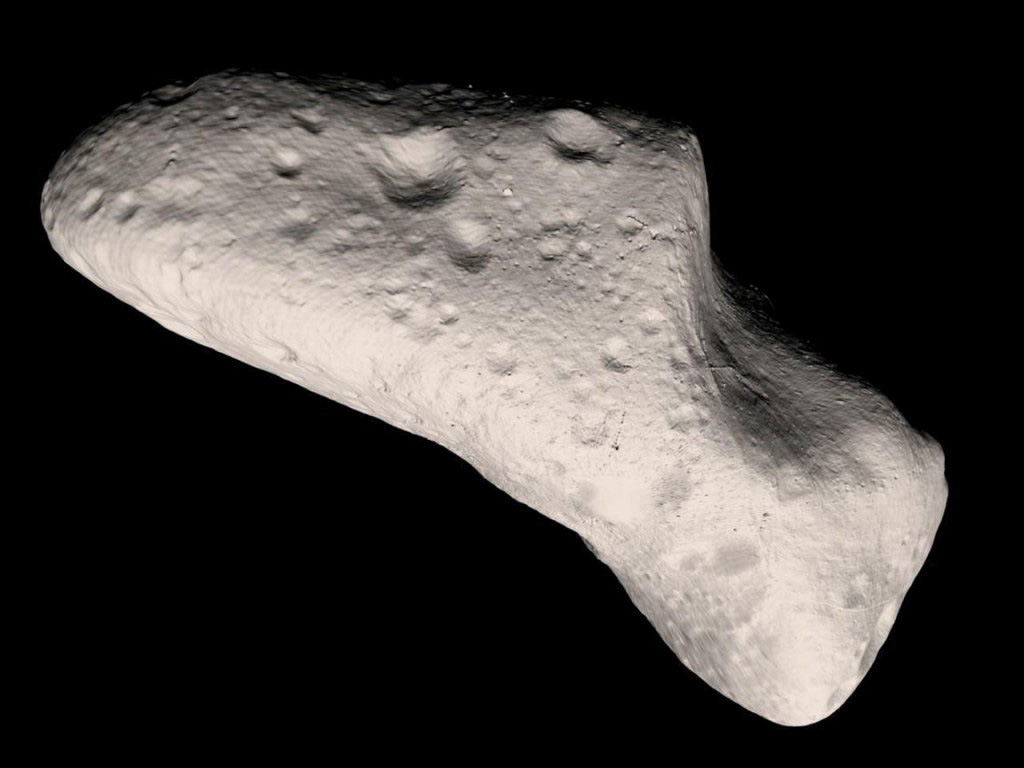
Two weeks ago I devoted the “Special Topics” presentation to the subject of near-Earth asteroids. Up until almost the end of the 19th Century all of the over 400 asteroids that had been discovered up to that time orbited within the “main asteroid belt” between Mars and Jupiter, and the astronomers of that era were quite surprised when an asteroid was found that could approach quite closely to Earth. As I discussed in that presentation, during the century and a quarter that has elapsed since then we have discovered that a rather large population of asteroids exists in near-Earth space, and in other regions of the solar system as well.
The asteroid that would create this paradigm shift was discovered on August 13, 1898, by Gustav Witt at the Berlin Observatory in Germany – on a photograph that he had taken of the asteroid (185) Eunike for astrometric purposes – and independently that same night by Auguste Charlois at Nice Observatory in France. Calculations soon revealed that it is traveling in a small, moderately elongated orbit (eccentricity 0.223) with a period of only 1.76 years (21 months) that brings it to 1.133 AU from the sun at perihelion and out to 1.783 AU – somewhat beyond the orbit of Mars – at aphelion. These calculations also revealed that it could approach the Earth moderately closely on occasion, indeed it had passed only 0.152 AU from Earth in January 1894, 4½ years before its discovery. (It was actually only two months past aphelion when discovered.) The newly-discovered asteroid was given the name Eros, after the Greek god of love.
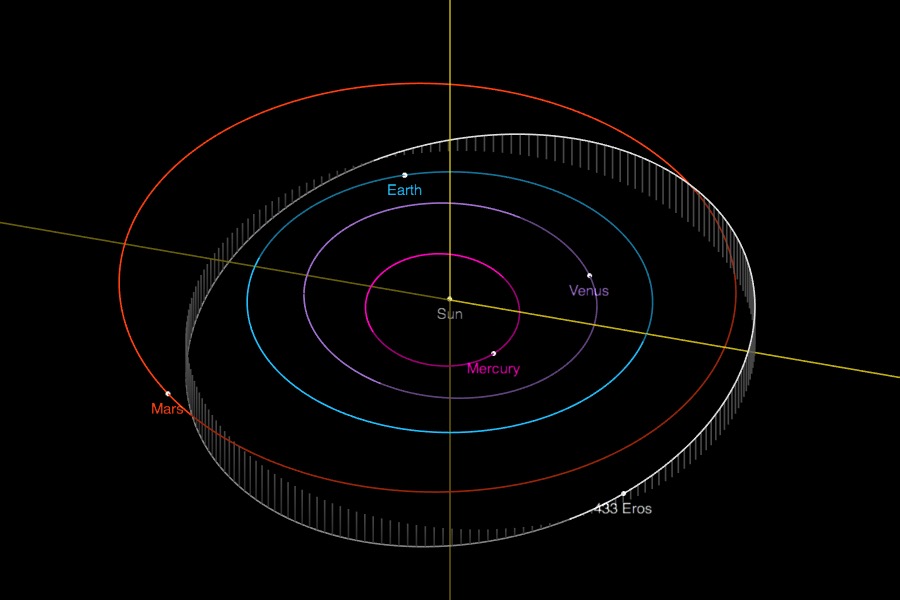
Eros was soon found to be exhibiting short-term periodic variations of its brightness, which are indicative of rotation and of its being oblong in shape. By 1913 Solon Baley at Harvard had determined an accurate rotation period, now firmly established as being 5 hours 16 minutes. Its physical dimensions have now been accurately determined as being 34 km by 11 km by 11 km, and when oriented such that we are seeing it “pole-on” its brightness can vary by as much as 1.5 magnitudes.
During the first few decades after its discovery Eros would play a key role in our understanding of the overall universe. It comes close enough to Earth such that observers stationed at different locations can determine a measurable parallax, and thus an accurate distance to it. By applying Kepler’s Third Law, and Isaac Newton’s Law of Universal Gravitation (from which Kepler’s Third Law can be derived), it can then be possible to determine an accurate estimate of the total mass of the Earth/moon system, and – even more fundamentally – an accurate measurement of the exact size of an Astronomical Unit. This in turn establishes a solid foundation for the determination of distances for objects in the solar system, and also for parallax measurements and resulting distance determinations for nearby stars. These are the first “rungs” of the “cosmic ladder” by which it is then possible to determine distances to objects throughout the entire universe.
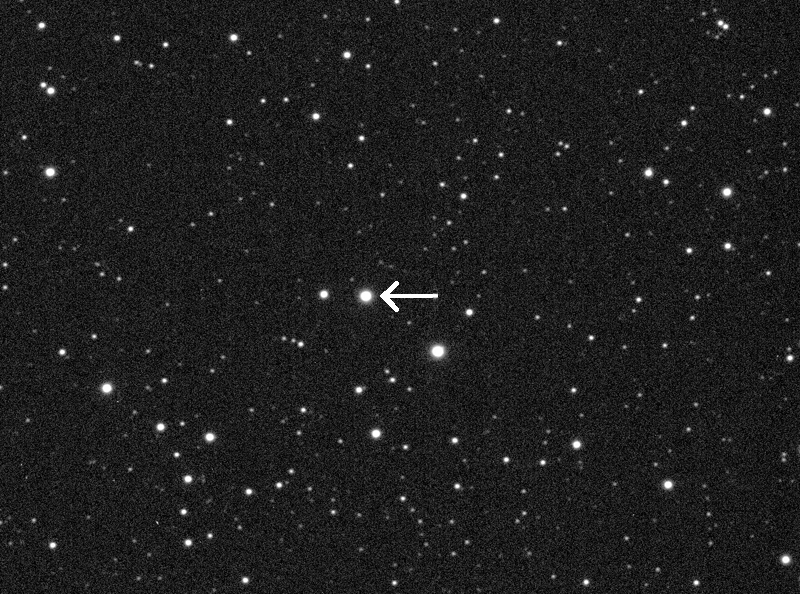
Eros made a moderately close approach to Earth (0.315 AU) in December 1900, and Arthur Hinks of Cambridge University was able to use parallax measurements obtained then to make a reasonably accurate determination of an AU. When Eros made its first post-discovery near-Earth encounter of 0.174 AU in January 1931, British astronomer Harold Spencer Jones (who would soon become Astronomer Royal, the Director of the Royal Observatory in Greenwich) was able to refine the determination of the exact size of an AU to a rather high degree. This determination remained the defining value of an AU until radar measurements in the late 1960s, and then spacecraft measurements, superseded it. The exact value of an AU has now been determined to be 149,597,870.7 km (92,955,807.3 miles).
On January 23, 1975, Eros passed 0.151 AU from Earth, the closest it has come to our planet since its discovery, and in the process it became as bright as 7th magnitude. That encounter allowed for the most accurately-determined values of the rotational period as of that time, as well as of the determination of Eros’ physical dimensions. On the very evening after its closest approach Eros occulted the 4th-magnitude star Kappa Geminorum, one of the earliest and most-publicized events of this nature; the occultation was successfully observed from locations in Massachusetts and Connecticut and among other things this event provided valuable lessons in the art of predicting such occurrences.
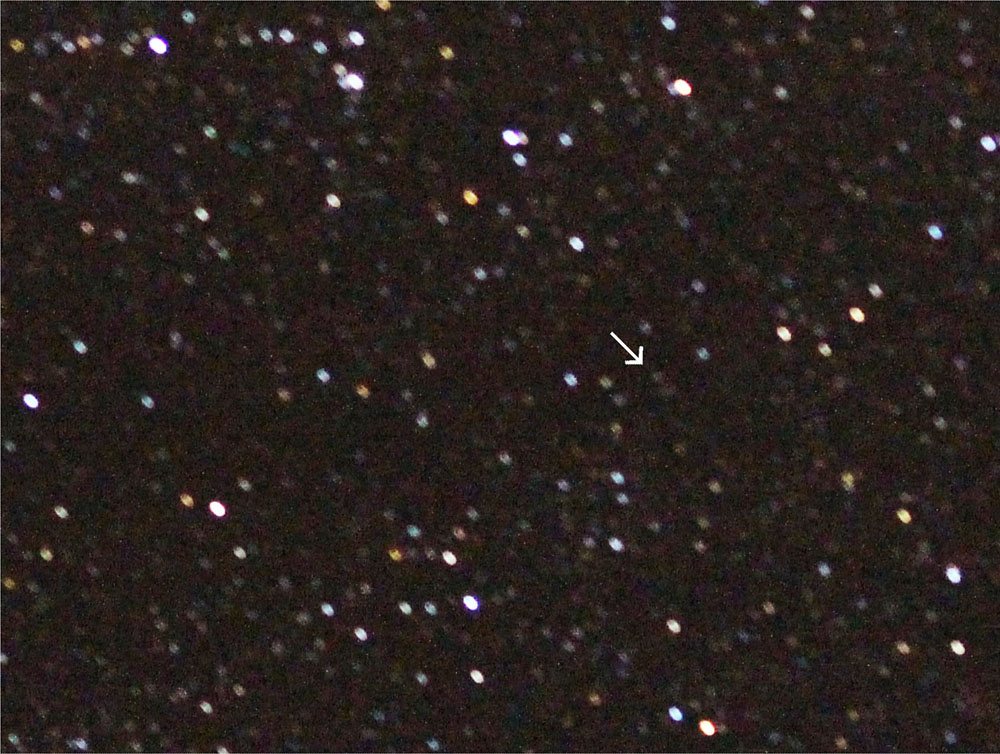
The 1975 approach of Eros to Earth was an important event to me personally, as in a very real sense it produced my “breakout” astronomical study. I was in my Junior year of High School (11th Grade) at the time, and under the mentorship of local amateur astronomer Phil Simpson – who passed away a year and a half ago – I was able to gain access to the local school district’s observatory (which housed a 32-cm reflector) and, at his suggestion, carry out several scientific observations of Eros. These included a measurement of its rotation period via observations of its brightness variations, a determination of its brightness parameters, and I even took a stab at predicting the path of the occultation of Kappa Geminorum. I entered my investigation into the Science Fair competition, and to my rather excited delighted, won First Place in the Earth and Space Science Division at the Local, Regional, and State Science Fairs as well as various other rewards. More importantly, I was able to meet Herb Beebe, then-chairman of the Astronomy Department at New Mexico State University (and who was one of the judges at the Regional Fair); our ensuing conversation turned into a longstanding friendship which in turn played a non-trivial role in my decision over a decade later to enter graduate school at NMSU. Incidentally, the display of my Science Fair project featured a log, spray-painted black and mounted on top of a birdbath pedestal, to portray Eros; this was to demonstrate both Eros’ elongated shape and its overall dark surface.
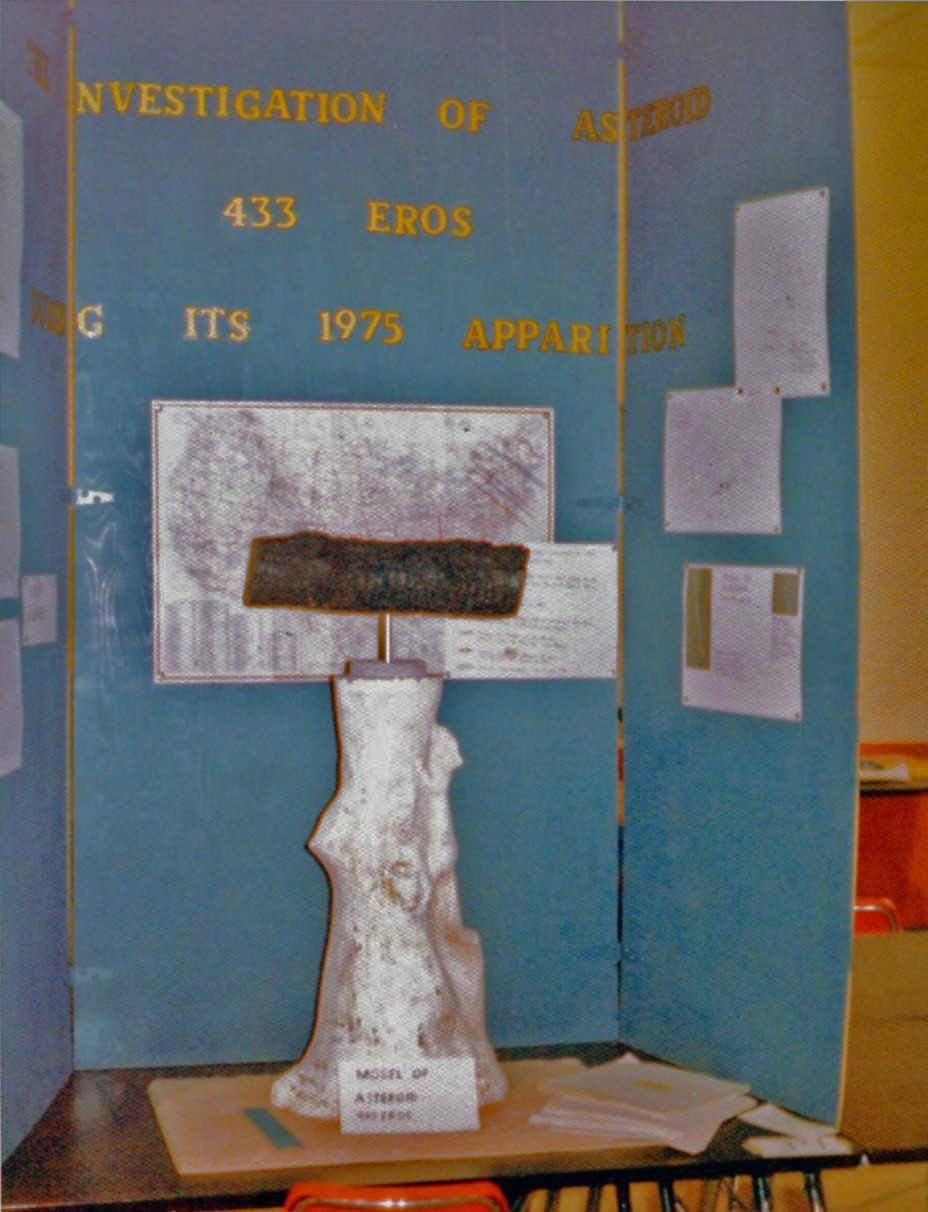
Eros would enter the news again near the end of the 20th Century, as it was the destination of NASA’s Near Earth Asteroid Rendezvous (NEAR) mission – later renamed “NEAR Shoemaker” in honor of renowned planetary geologist Eugene “Gene” Shoemaker, who was killed in an auto accident in July 1997. NEAR Shoemaker was launched from Cape Canaveral, Florida on February 17, 1996, and after an encounter with the main-belt asteroid (253) Mathilde on June 23, 1997 and a gravity-assist flyby of Earth on January 23, 1998, it was planned for arrival at and orbital insertion around Eros in January 1999. Unfortunately, an aborted engine burn in December 1998 forced a one-year postponement of this, although NEAR Shoemaker was able to make a distant flyby of Eros (3800 km) later in December.
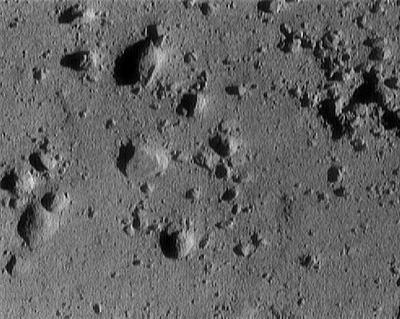
NEAR Shoemaker arrived at Eros in February 2000 and successfully went into orbit around it on February 14. For the next twelve months NEAR Shoemaker orbited Eros in a variety of distances and orbital configurations, in the process extensively photographing and mapping the surface and making numerous scientific measurements. Among many other features, the images show one large crater, since named Charlois Regio, that appears to be due to an impact that took place about one billion years ago; this event appears to be responsible for the many of the large boulders strewn across Eros’ surface as well as the lack of small craters over a significant percentage of the surface. After one year, and as its supply of maneuvering fuel was beginning to run out, NEAR Shoemaker descended to Eros surface on February 12, 2001 and performed a soft landing onto the surface – becoming in the process the first spacecraft to make a successful soft landing onto an asteroid or other small body. It continued transmitting data for two more weeks before it was shut down.
Since that time Eros has made two additional somewhat close approaches to Earth: one of 0.179 AU on January 31, 2012 and the other being 0.209 AU on January 15, 2019. It does not approach Earth again for quite some time, although due to its relative closeness and large size it is often nevertheless detectable without much difficulty under appropriate conditions; for example, it will be 13th magnitude, and accessible in the morning sky, when at perihelion in early November this year, and will be 12th magnitude when it is next at opposition, in mid-June 2021, at which time it will be three months away from aphelion.
Eros will next approach Earth again on January 24, 2056, when it will pass 0.150 AU from our planet – marginally closer than its 1975 approach. I would be 97 years old at the time, and when I pointed this out to some of my science-minded friends when I was in High School one of them jokingly replied that perhaps I could do another Science Fair project on it then. I suppose we will have to see about that . . . But, perhaps, the students of that era could perform their own investigations of Eros when it makes its approach. And, perhaps, some of them might even be able to do so by journeying out to it and making observations from its surface . . .
More from Week 4:
This Week in History Comet of the Week Free PDF Download Glossary
Ice and Stone 2020 Home Page


